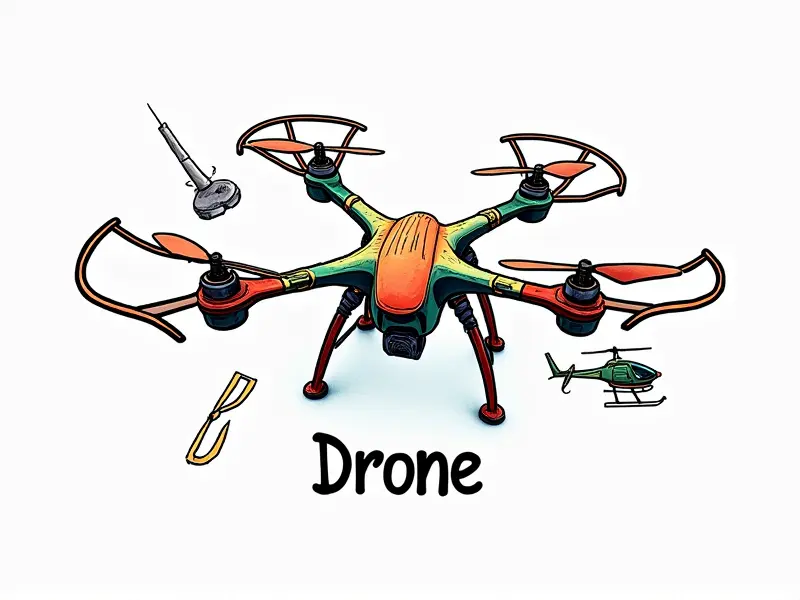How do I control an RC airplane?

Mastering RC Airplane Controls Quickly
Welcome to the exciting world of remote control (RC) airplanes! Whether you're a seasoned hobbyist or just starting out, mastering the controls of your RC plane is crucial for safe and enjoyable flying. This article will guide you through the basics and advanced techniques to help you navigate your RC airplane with confidence.
Beginner's Guide to Flying RC Planes
Flying an RC plane can seem daunting at first, but with the right approach, it becomes a thrilling hobby. Here’s how to get started:
- Select the Right Plane: Choose a beginner-friendly model that is easy to control and has good stability.
- Understand Basic Controls: Learn about pitch (up and down), roll (left and right), and yaw (turn).
- Practice in Safe Areas: Start flying in open fields or designated RC parks to avoid obstacles.
Learn RC Plane Control in Minutes
The key to quick learning is understanding the fundamental controls. Here’s a brief overview:
- Pitch Control: Adjust the elevator (tail) to control pitch, which affects ascent and descent.
- Roll Control: Use the ailerons (wing flaps) to roll left or right for turns.
- Yaw Control: Operate the rudder (vertical tail fin) to steer the plane left or right.
Simple Techniques for RC Airplane Mastery
Mastery comes with practice and patience. Here are some simple techniques to enhance your flying skills:
- Slow Down Your Movements: Start by making small, gradual adjustments rather than sudden jerks.
- Focus on One Control at a Time: Isolate each control (pitch, roll, yaw) to understand its impact separately.
- Practice Landings: Perfecting landings is crucial for safe flying and can be done by gradually reducing speed and altitude.
Flying RC Planes: The Ultimate Guide
This comprehensive guide covers everything you need to know about controlling your RC plane:
- Pre-flight Checks: Ensure all components are functioning correctly before takeoff.
- Takeoff Procedure: Gradually increase throttle while maintaining a steady pitch for smooth liftoff.
- In-Flight Maneuvers: Practice basic maneuvers like loops, rolls, and stalls to improve your skills.
How to Steer Your First RC Plane
Steering an RC plane involves coordinating multiple controls simultaneously. Here’s a step-by-step guide:
- Start with Basic Turns: Use the rudder and ailerons together for smooth turns.
- Practice S-Lines: Combine pitch, roll, and yaw to execute precise maneuvers.
- Learn to Hover: Practice maintaining a steady position in mid-air by balancing all controls.
Top Tips for Controlling RC Airplanes
Here are some top tips to help you control your RC plane more effectively:
- Use a Trainer Plane: Start with a trainer model designed specifically for beginners.
- Watch Online Tutorials: There are numerous video tutorials available online that can provide visual guidance.
- Join Local Clubs: Engage with experienced hobbyists who can offer valuable advice and tips.
Basic Techniques for Controlling RC Aircraft
Mastery of basic techniques is essential. Here are some key points to focus on:
- Understanding Aerodynamics: Learn about lift, drag, thrust, and weight to better understand how your plane flies.
- Practice with a Simulator: Use RC flight simulators to practice without the risk of damaging your aircraft.
- Adjust Control Surfaces: Fine-tune your control surfaces for optimal performance based on wind conditions and terrain.
Navigate RC Planes with Confidence
Gaining confidence in navigating your RC plane is crucial. Here’s how to build that confidence:
- Start Small: Begin with simple maneuvers and gradually increase complexity as you gain experience.
- Practice Regularly: Consistent practice will help you become more comfortable and proficient over time.
- Stay Calm Under Pressure: Maintain a calm demeanor to make better decisions during challenging flights.
Learn RC Plane Controls in Minutes
To learn the controls of your RC plane quickly, follow these steps:
- Read the Manual: Start by thoroughly reading the user manual for specific instructions and tips.
- Watch Video Tutorials: Visual demonstrations can provide a clearer understanding of how to operate each control.
- Practice in Short Sessions: Break your practice into short, focused sessions to avoid fatigue and maintain concentration.
Quick Guide to Controlling RC Aircraft
This quick guide summarizes the essential steps for controlling an RC aircraft:
- Pre-flight Inspection: Check all components before each flight.
- Basic Controls: Understand and practice pitch, roll, and yaw separately.
- Maintain Stability: Keep your plane stable by balancing the controls during flight.
Conclusion
Controlling an RC airplane is a rewarding hobby that combines skill, patience, and practice. By following this guide, you’ll be well on your way to mastering the art of flying RC planes with confidence and precision. Remember, every great pilot started as a beginner, so stay committed and enjoy the journey!

